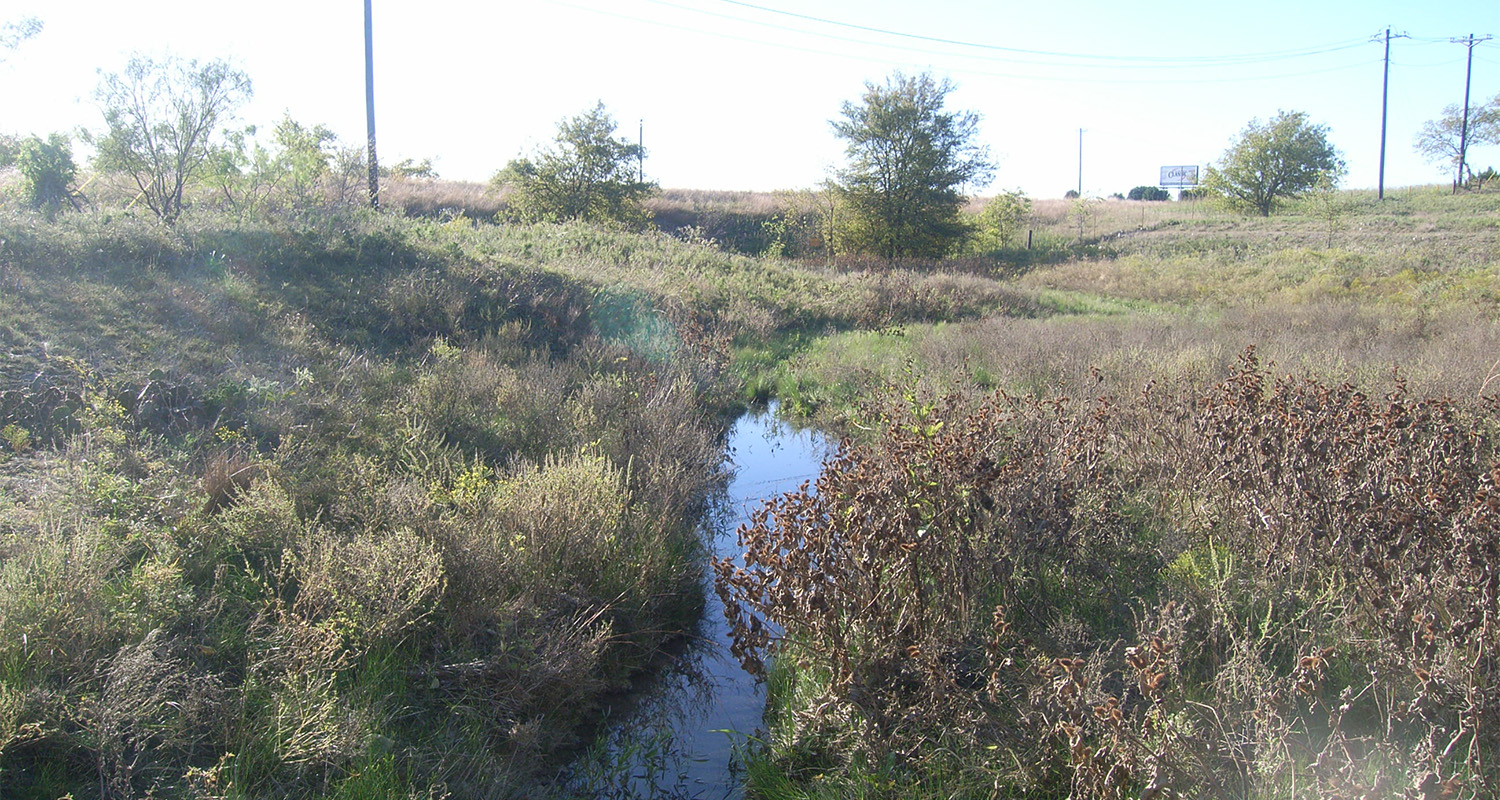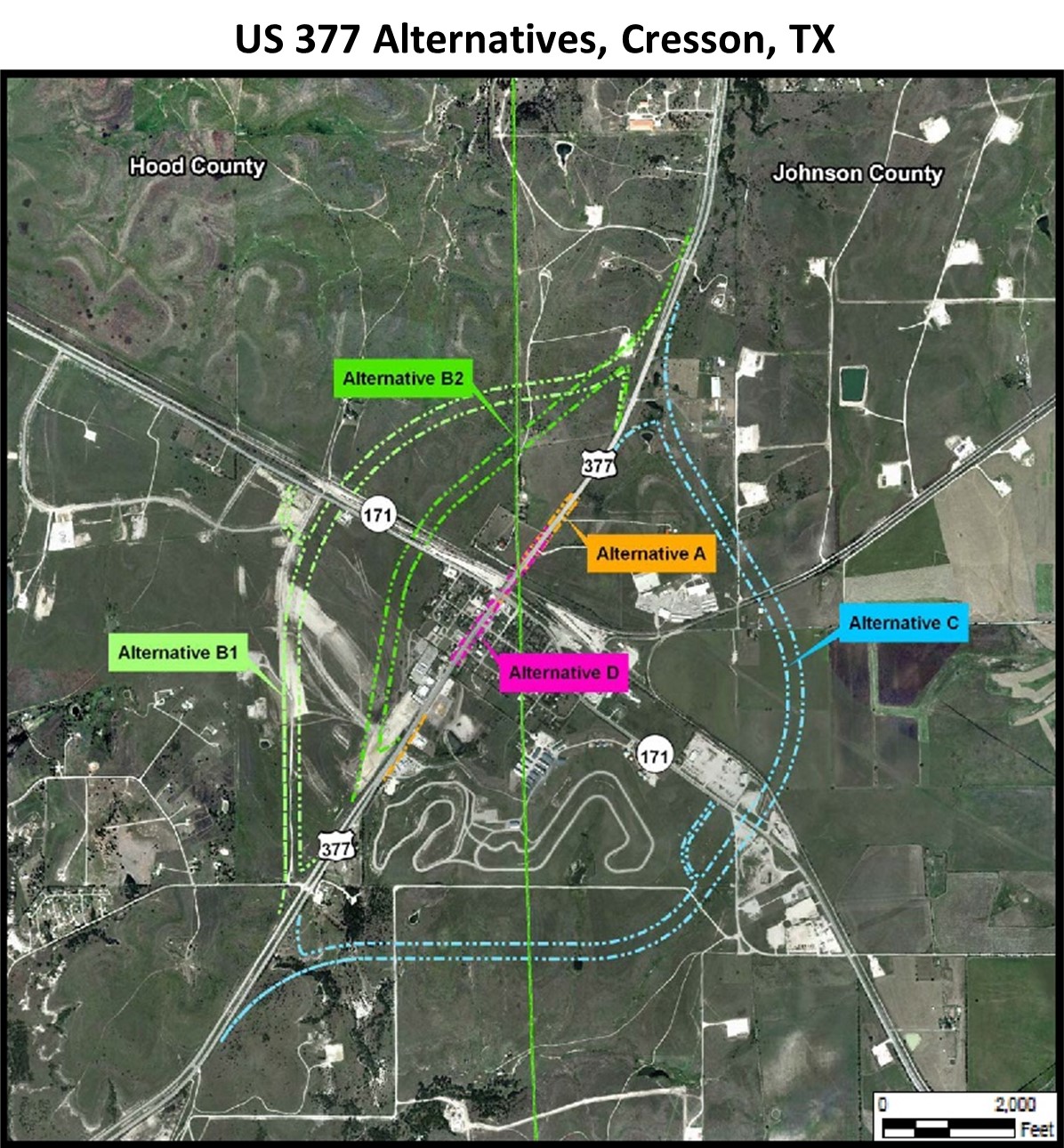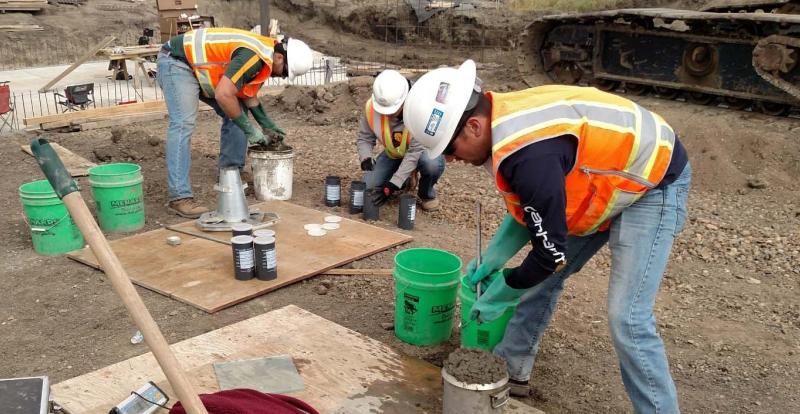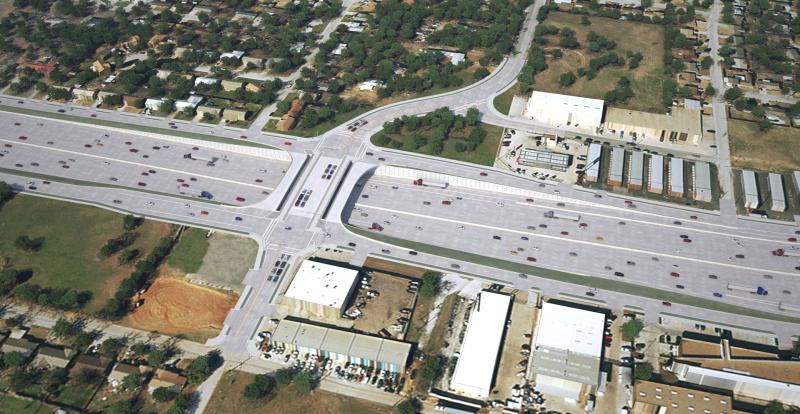Project Detail
Build alternatives minimize environmental impact on US 377 expansion

The existing US 377 is a four-lane divided highway in Hood and Johnson Counties that extends south from IH 20 in the City of Fort Worth to just north of the City of Cresson. The highway transitions to a four-lane undivided highway as it passes through Cresson and widens back to a four-lane divided highway south of Cresson. Within the City of Cresson, US 377 intersects both SH 171 and the Fort Worth and Western Railroad (FWWR) at-grade. The SH 171 intersection is signalized, and the FWWR crossing is regulated by warning lights and gates.
The proposed project is an approximate three-mile-long relief route west of the City of Cresson. The relief route is a new location, four-lane divided highway beginning approximately one mile south of the intersection of US 377 and SH 171 and ending approximately one mile north of the same intersection. The roadway consists of two 12 foot-wide lanes in each direction, 10-foot-wide outside shoulders, and a 48-foot-wide median which includes four-foot-wide inside shoulders. The proposed relief route bridges SH 171 and the FWWR on two parallel bridges each consisting of two 12-foot-wide lanes, four-foot wide inside shoulders, and 10-foot-wide outside shoulders. Civil Associates Inc., a Bartlett & West company (CAI) conducted the alternatives analysis, and prepared the schematic design and Environmental Assessment (EA) for this controversial project.
Challenges
Engineering
The proximity of the at-grade railroad crossing on US 377 to the SH 171 intersection impeded traffic flow and was prone to vehicular crashes. High volume truck traffic also led to congestion along US 377. In addition, US 377 is on the Texas Highway Trunk System, but did not meet TxDOT design criteria for the System.
The FWWR crossed US 377 approximately 200 feet north of the SH 171 intersection. A FWWR switchyard is located west of this crossing. US 377 traffic was stopped numerous times per day by trains traveling through Cresson and by trains entering and exiting the switchyard. In addition to travel time delays, the railroad crossing posed a safety risk for motorists. In fact, this crossing was the 2nd most likely railroad crossing to have a crash in Texas (Accidents Prediction Report, FHWA, Jan. 2008). Also, the numerous existing and proposed natural gas wells and pipelines traversing the area created additional constraints when weaving the alternative alignments.
Environmental
New location projects typically require the preparation of an Environmental Impact Statement, which is a labor-intensive document that requires several years to receive environmental clearance. The project would impact a large wetland complex and a native Tallgrass Prairie, both of which were identified and delineated in the field by the CAI Environmental Team. There was concern that an Individual Section 404 Permit would be required for the wetland impacts and that extensive Texas Parks and Wildlife Department (TPWD) coordination would be required for the Tallgrass Prairie impacts. To complicate these issues, right of entry (ROE) was denied by some of the property owners so the environmental field work was incomplete.
Solutions
Engineering
To relieve US 377, the CAI Engineering Team developed five conceptual Relief Route Build Alternatives which included cross section alternatives, construction costs, ROW requirements, and hierarchical environmental concerns. The alternatives had four lanes divided by a 48-foot-wide median and included: a railroad bridge, a tunnel under the railroad, two relief routes along the west side of the city, and one relief route along the east side. CAI conducted Work Group meetings to review and discuss the data developed, alternatives, and a screening matrix which was subsequently presented at a Public Meeting where staff were available showing stakeholders how properties would be affected.
After analyzing the comments presented during the Public Meeting, the CAI Engineering Team refined and presented a Technically Preferred Build Alternative (Alt B1) to the Work Group for further comment and more detailed design.

Environmental
Based on a desktop constraints analysis and field data, the CAI Environmental Team coordinated with the designers to shift the alignment where practicable to avoid and minimize potential impacts.
The CAI Environmental Team solved the ROE issue by evaluating the resource impacts using satellite imagery.
Value
As a result, the project impacts to the wetland complex were minimized to be less than 0.5 acre so that the preparation of an Individual Section 404 Permit was avoided. Instead, a less costly and time-consuming Nationwide Permit 14 with Pre-construction Notification could be authorized by the U.S. Army Corps of Engineers.
For Tallgrass Prairie impacts, the CAI Environmental Team coordinated avoidance and mitigation strategies with TxDOT Environmental Affairs and TPWD early in the design stage so that the project schedule was not affected by coordination time.
Tell us about your project
We’d love to work with you. Tell us the services you are seeking and one of our team members will connect with you.


